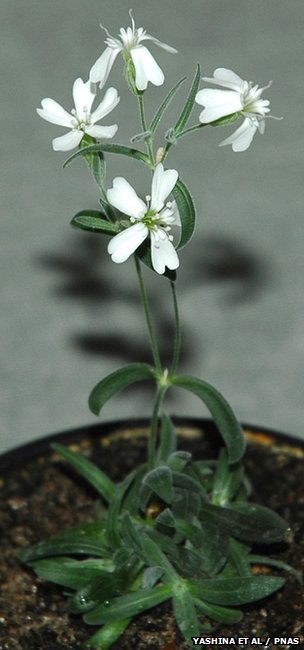A well-preserved mammoth carcass has been found by an 11-year-old boy in the permafrost of northern Siberia.
The remains were discovered at the end of August in Sopochnaya Karga, 3,500 km (2,200 miles) northeast of Moscow.
A team of experts from St. Petersburg then spent five days in September extracting the body from frozen mud.
The mammoth is estimated to have been around 16 years old when it died; it stood 2 m tall and weighed 500 kg.
It has been named Zhenya, after Zhenya Salinder, the 11-year-old who found the carcass while walking his dogs in the area.
Alexei Tikhonov, from the St. Petersburg Zoology Institute, who led the team excavating the mammoth, said this specimen could either have been killed by Ice Age humans, or by a rival mammoth.
He added that it was well preserved for an adult specimen.
His colleague Sergei Gorbunov, from the International Mammoth Committee, which works to recover and safeguard such remains, said: “We had to use both traditional instruments such as axes, picks, shovels as well as such devices as this <<steamer>> which allowed us to thaw a thin layer of permafrost.
“Then we cleaned it off, and then we melted more of it. It took us a week to complete this task.”
But several juvenile examples have come to light that are more complete.
Earlier this year, a very well preserved juvenile mammoth nicknamed Yuka was unveiled by scientists.
Found in the Yakutia region of Russia, it preserves much of its soft tissue and strawberry-blonde coat of hair. There were also signs from its remains that humans may have stolen the carcass from lions and perhaps even stashed it for eating at a later date.
[youtube UGMKO-9gJS4]
Russian scientists have grown plants from fruit stored away in permafrost by squirrels over 30,000 years ago.
The fruit was found in the banks of the Kolmya River in Siberia, a top site for people looking for mammoth bones.
The Institute of Cell Biophysics team raised plants of Silene stenophylla – of the campion family – from the fruit.
Writing in Proceedings of the National Academy of Sciences (PNAS), they note this is the oldest plant material by far to have been brought to life.
Prior to this, the record lay with date palm seeds stored for 2,000 years at Masada in Israel.
Professor David Gilichinsky, the leader of the research team, died a few days before his paper was published.
In the workpaper, Professor David Gilichinsky and his colleagues describe finding about 70 squirrel hibernation burrows in the river bank.
“All burrows were found at depths of 20-40m from the present day surface and located in layers containing bones of large mammals such as mammoth, woolly rhinoceros, bison, horse, deer, and other representatives of fauna from the age of mammoths, as well as plant remains,” they write.
“The presence of vertical ice wedges demonstrates that it has been continuously frozen and never thawed.
“Accordingly, the fossil burrows and their content have never been defrosted since burial and simultaneous freezing.”

Russian scientists have grown plants from fruit stored away in permafrost by squirrels over 30,000 years ago
The squirrels appear to have stashed their store in the coldest part of their burrow, which subsequently froze permanently, presumably due to a cooling of the local climate.
Back in the lab, near Moscow, the team’s attempts to germinate mature seeds failed.
Eventually they found success using elements of the fruit itself, which they refer to as “placental tissue” and propagated in laboratory dishes.
The Russian team’s theory is that the tissue cells are full of sucrose that would have formed food for the growing plants.
Sugars are preservatives; they are even being researched as a way of keeping vaccines fresh in the hot climates of Africa without the need for refrigeration.
So it may be that the sugar-rich cells were able to survive in a potentially viable state for so long.
Silene stenophylla still grows on the Siberian tundra; and when the researchers compared modern-day plants against their resurrected cousins, they found subtle differences in the shape of petals and the sex of flowers, for reasons that are not evident.
The scientists suggest in their PNAS paper that research of this kind can help in studies of evolution, and shed light on environmental conditions in past millennia.
But perhaps the most enticing suggestion is that it might be possible, using the same techniques, to raise plants that are now extinct – provided that Arctic ground squirrels or some other creatures secreted away the fruit and seeds.

